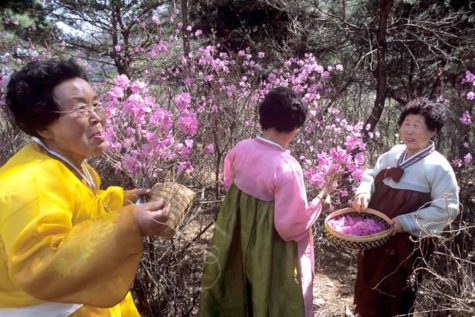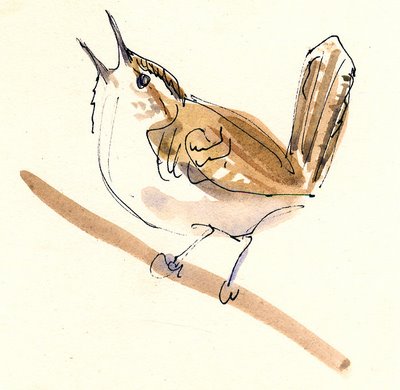Birds
Samjinnal is a Korean holiday that falls on March 3 of the lunar calendar. Three being a positive number in numerology, this date containing two threes was considered to be highly auspicious. This festive day announces the arrival of spring. By this time, spring is usually in full bloom – the weather is warm, the young grass is a lively green, and the first flowers are blooming.
Note: Because this holiday is based on the lunar calendar, on Gregorian Calendars the date will vary from year to year. In 2016, this holiday was celebrated on April 9th, in 2017, this holiday falls on March 30.
It is known as the day the swallows came back from Gangnam and the day the snake came out from its winter sleep. It is also the day birds and butterflies start to appear.
Koreans believed that swallows left for their southward journey on ninth day of the ninth lunar month and returned back on Samjinnal. They started to repair their old nests under the eaves or built the new ones to hatch their young.
Many seasonal activities associated with spring took place on this day. Villagers headed out on a blossom tour of the nearby mountains as the gardens were increasingly frequented by butterflies, fresh-green buds became visible on tree branches and the hills and prairies put on their colorful spring dresses.
Popular picnic foods included flower petal pancakes and other seasonal delights. Banquets were also held around this time of year to treat senior members of the community to special meals. For the noblemen across the country, Samjinnal was a day of archery contests.
Flower petal pancakes for the blossom picnic were made with glutinous rice batter, formed in circles, fried in a pan with sesame oil and topped with azalea petals. A special dessert known as hwamyeon was prepared by putting slices of mung-bean dough cakes into omija (favor flavor berries)-scented water, and flavoring it with honey and pine nuts. When preparing the mung bean dough for this dessert, housewives sometimes added azalea petals to it. If they made the dough with honey and dyed it red, the dish would be called sumyeon.
Sumyeon was considered a ritualistic dish as it was frequently used for memorial services.One of the beliefs associated with Samjinnal is that seeing a white butterfly on that day was an ominous sign since white signifies mourning. The sighting of a white butterfly could result in a family member dying during the course of the year.
Tiger or yellow butterflies on the other hand were considered an excellent sign, and portended a lucky year. Women made sure they washed their hair on Samjinnal as they believed it would make their hair vigorous and beautiful throughout the year. Snakes that came out of their hibernation around that time were avoided at all costs since seeing these slithering creatures was regarded as unlucky.
Other names for this holiday:
It was called samjil (삼질) in oldKorean language and referred to as sangsa (상사, 上巳), wonsa (원사, 元巳), sungsam(중삼, 重三), sangje (상제, 上除) or dapcheongjeol (답청절, 踏靑節) in hanja. Samjinnal implies the overlapping of Sam (three). According to Choi Namseon, samjil was derived from the consonants of Samil, and Sangsa is defined as the first snake day of the 3rd lunar month.
Source: Wikipedia and Encyclopedia of Korean Folk Culture
The wren, the wren, The king of all birds,
On St. Stephen’s Day Is caught in the furze.
One of the most remarkable and dramatic Solstice customs involving animals is the Hunting of the Wren, which traditionally takes place on Boxing Day or St. Stephen’s Day. The custom lasted longest in Wales and the Isle of Man and still takes place today in Ireland. A description from 1840 describes it thus:
For some weeks preceding Christmas, crowds of village boys may be seen peering into hedges, in search of the tiny wren; and when one is discovered the whole assemble and give wager chase until they have slain the little bird. In the hunt the utmost excitement prevail; shouting, screeching, and rushing, all sorts of missiles are flung at the puny mark… From bush to bush, from hedge to hedge, is the wren pursued until bagged with as much pride and pleasure as the cock of the woods by the more ambitious sportsman… On the anniversary of St. Stephen the enigma is explained. Attached to a huge holly bush, elevated on a pole, the bodies of several little wrens are borne about… through the streets in procession… And every now and then stopping before some popular house and there singing the Wren song.
Various versions of this song have survived. Here is a typical one:
The wren, the wren, the king of all birds,
On St. Stephen’s Day was caught in the furze;
Though his body is small, his family is great,
So if it please your honor, give us a treat.
On Christmas day I turned a spit;
I burned my finger, I feel it yet.
Up with the kettle, down with the pan.
Give us some money to bury the wren.
The antiquity of this rather barbaric custom is clear enough. At one time the Wren, the “king of all birds,” must have represented the dying year king and was sacrificed on his behalf for the good of the land. The following story from Scotland suggest the reason for this rather plain little bird being addressed as King.
The Parliament of Birds:
At a gathering of birds, it was decided to elect a king by seeing which could fly the highest, and nearest to the sun. The eagle’s broad strong wings bore it higher than any other. It was about to acclaim its prowess, when it became aware of a “whirr-chuck” sound – the little wren had flown yet higher than the eagle, because it was cheekily perched on it’s back.
For many years during the 18th and 19th centuries, the Irish Wren Boys were accompanied by masked guisers, including the ubiquitous lair bhan or White Mare. Nowadays, due in part to a shortage of wrens and to a somewhat more bird-conscious awareness, they are seldom hunted. Although the Wren Boys still circulate in Ireland, they no longer kill a wren, but proceed from house to house with a decorated cage.
Here is a different wren song sung by the guisers in Pembrokeshire, England, where the custom is no longer practiced, but the sacredness of the bird is remembered:
Joy, health, love and peace be all here in this place.
By your leave we will sing concerning our king.
Our king is well dressed, in silks of the best,
In ribbons so rare, no king can compare.
We have traveled many miles, over hedges and stiles,
In search of our king, until you we bring.
Old Christmas is past, Twelfth Night is the last,
And we bid you adieu, great joy to the new.
It is not of the newborn king of Winter, the Wondrous Child they are speaking, but King Wren, who is remembered in a curious song from Oxfordshire, that manages to encapsulate the more ancient significance of the custom.
From: The Winter Solstice
Art by: Cathy Johnson





